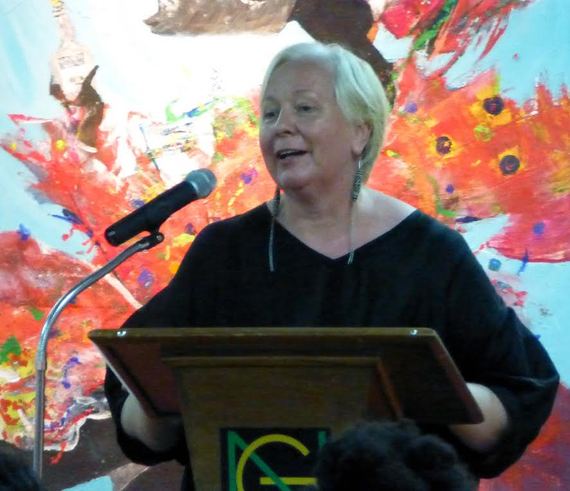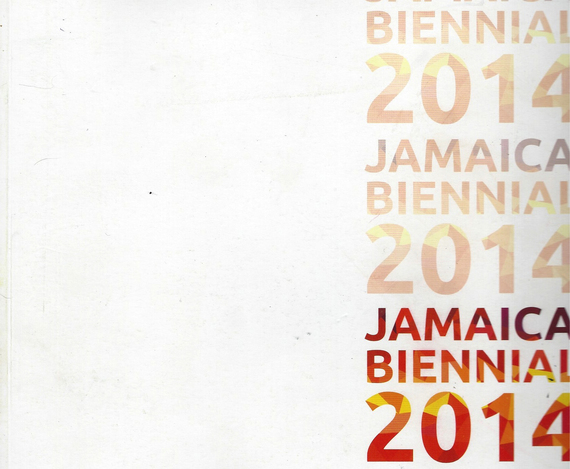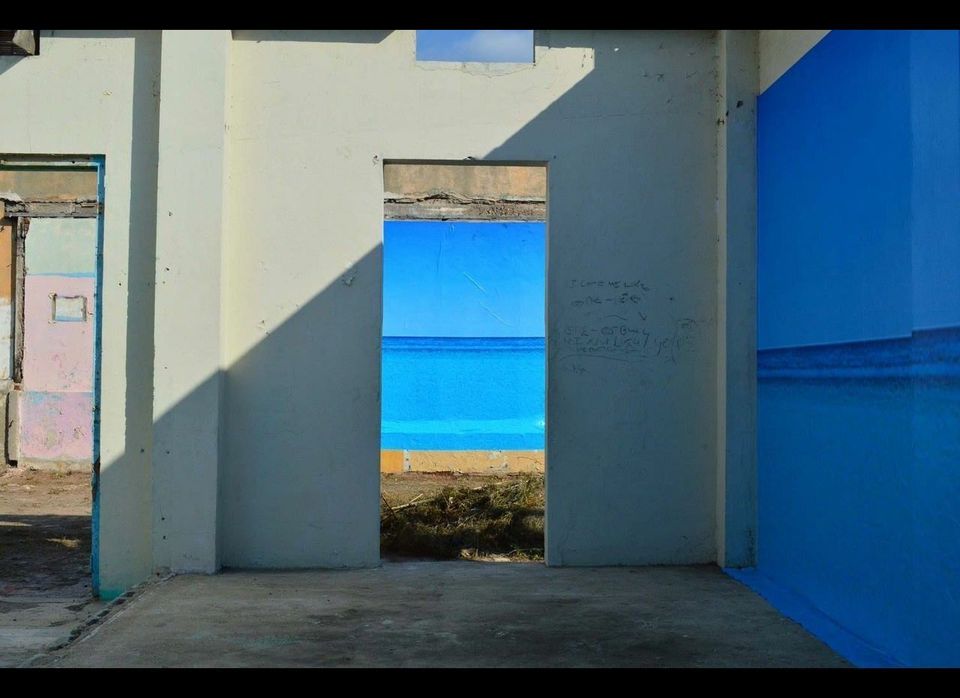The greatest misconception that people have about Jamaican art, says Dr. Veerle Poupeye, Executive Director of the National Gallery of Jamaica, comes from trying to narrow down the definition of what, exactly, Jamaican art is. "Trying to do that is just an exercise in futility," maintains Poupeye, "because there is an open-endedness and a 'cosmopolitan-ness' to what it means to be Jamaican and, consequently, to the art that Jamaicans produce. Jamaican identity is quite diverse, and to try and narrow down what Jamaican art is, is to simplify the very meaning of what it is to be Jamaican and the work that Jamaican artists are doing right now."
Poupeye should know. She and her team have just staged the triumphant Jamaican Biennial 2014, which runs from December 7, 2014 to March 15, 2015. Significantly, this is a Biennial that leaves the confines of the National Gallery of Jamaica proper, travelling out onto the streets of Kingston, to historic Devon House, and then on to the National Gallery West in Montego Bay.
"What we are trying to do," explains Dr. Poupeye, "is move the National Gallery out of a confined space. We want the Gallery to be more open and accessible, both as a social and a virtual experience. We have ramped up our social media work, and we are working more with regional partners, with whom we hope to create an itinerary of art events. Even the very definition of who is considered a Jamaican artist has been expanded to include individuals not born on the island, but who claim Jamaican ancestry in some way to the island, as well as artists living and working on the island who were not born on the island. We have found that the old definitions of 'Jamaican-ness' are no longer feasible and that artists are now tapping broadly into and questioning what is Jamaican culture and what it means to be Jamaican."
Consequently, the National Gallery of Jamaica is in the process of transitioning. "Given the way that artists are challenging definitions, we, too, at the Gallery have had to start rethinking what we are doing at the National Gallery of Jamaica. Hence, the National Biennial is now the Jamaica Biennial. In so doing, we are sending a signal that, instead of being only inward-looking, we are now outward-looking as well. In addition, we are now engaging more regional and international partners. This Biennial showcases the work of invited and juried artists, as well as six special projects by artists who have Caribbean, but not necessarily Jamaican, roots. Another important decision that we made was retaining two international jurors in deciding on the juried section of the exhibition. We wanted new eyes, a new voice, and a new perspective on the work selected, and we certainly got that. The judges Sara Hermann (Estudio del Sur in the Dominican Republic) and Diana Nawi (Pérez Art Museum in Miami) found and brought to our attention artists both on and off the island whom we had never heard of before. As such, there is a freshness to this Biennial."
In fact, the Biennial has many compelling and engaging works. Standout pieces include Bahamian Blue Curry's intervention in an old abandoned building in downtown Kingston that one passer-by told me, the third time I visited this work, was used as a toilet by homeless individuals. The roof of this building is gone, and all that is left standing are the walls and the frames of windows and doorways. Everything else has been stripped bare.
In the rooms of this bereft and abandoned space Blue Curry has hung a vista of unending blue that can be experienced from multiple locations, thereby changing the work every single time one sees it. In so doing, Blue Curry has simultaneously simplified the touristic view of many places in the Caribbean while complicating the many ways that one can look at the Caribbean. Indeed, looking at Blue Curry's work is like looking at an endlessly fascinating and ever-changing kaleidoscope.
At the National Gallery proper, the works overall are very robust. Here, though, there is perhaps an unconscious engagement with the colors black and gold which resonate the strongest in Kimani Beckford's large resplendent black Madonna with a golden halo, Shoshanna Weinberger's two gorgeous "Mangrove Banshee" and "Broken Flower", and Charles Campbell's three-dimensional black ball upon which, on closer examination, one can see slave ships all floating on a sea of mesmerizing black.
At the National Gallery, too, one also finds Camille Chedda's compelling black and white paintings on white disposable plastic bags, of people, mainly young black men, who have been killed by the police on the island. The work, provocatively titled "Wholesale Degradeables," forces recall of the infamous 2010 Dudus incident, when upwards of seventy persons were killed by the police in search of Christopher "Dudus" Coke. Jasmine Thomas-Girvan's small delicate work of a woman almost covered by black butterflies is a moving piece on mourning, while Donette Zacca's photograph of a woman covered all in black but for her eyes is a beautifully unsettling work.
Leasho Johnson's mural of a dancehall session gone amuck painted directly on one of the walls at the gallery is in direct conversation with Blue Curry's work, in so far as it engages how Jamaica -- and the larger Caribbean -- is often perceived and seen. What I found particularly appealing about Johnson's work is that in some ways it runs counter to the popular trend of 'blinging' things up in Jamaican dancehall culture. Instead, the work engages a minimalist, pop-art kind of aesthetic in making very pointed commentary on the exoticism that often still obtains in places like Jamaica. For Poupeye, Johnson's work is representative of a younger generation of Jamaican artists who are casting new critical eyes on notions of Jamaican society and culture -- dancehall culture in particular.
Not that I have a problem with bling at all since I found Sophia Dawson's acrylic, fabric, diamond dust on canvas piece, titled "Assasta Speaks," absolutely breathtaking. What is so intriguing about the works shown at the National Gallery of Jamaica proper are the discussions and confrontations and contestations in play at this site of the Biennial. Robin Farquharson's two photographs, "Thought Process" and "I and Eye", for example, are as much about seeing and the eye, as Johnson's and Blue Curry's work, but here the eyes are turned inward, looking at oneself.
I found the work at Devon House to be much more uneven than that at the National Gallery of Jamaica. I am putting this down to perhaps the artists selected for this particular site along with the curators' unfamiliarity with working in the confines of a historical house. That said, here too, some works completed and complemented Devon House in unnerving ways. Greg Bailey's "Boasy Slave" -- 'boasy' being a term in Jamaica used to describe someone who is a show-off -- fits right in place with the décor and ambiance of Devon House, a home made by and for Jamaica's first black millionaire.
The other work that seemed effortlessly placed at Devon House is that of Oneika Russell, who took over a child's bedroom in the house and decorated the bed with paper postcards in which someone, presumably an older teenage child, is having perhaps a too-grown-up conversation with an unknown "you". Overlaid on the postcards is a thin seine of what looks like yellow mosquito netting that adds a poetic feeling to it all. Cosmo Whyte's photograph "Head Boy" is also a forceful addition to the cohort of works at Devon House.
Though I did not make it to see the work of acclaimed artist Rene Cox at National Gallery West in Montego Bay, I would say that, all in all, the Jamaica Biennial 2014 is strong and convincing and it leads one to wonder how a girl originally from Belgium ended up becoming the Executive Director of the National Gallery of Jamaica and putting together such a rich tapestry of Jamaican, and arguably Caribbean, art. "In a sense," Poupeye answers, laughing, "it all happened by happenstance." It was her husband who first came to Jamaica more than thirty years ago, and she later followed him to the island. They were only supposed to be on the island for two, possibly four, years. That was back in 1984. Apart from a stint getting her doctorate at Emory University in Atlanta, Poupeye has basically called the island home for the past thirty-odd years.
Today Dr. Veerle Poupeye is a naturalized Jamaican citizen who is passionately and doggedly committed to the development of Jamaican and regional Caribbean art and its many iterations and reverberations. "What we are seeing in this Biennial are especially potent works in video and digital photography. If you look at the Biennial you will see a large and very ambitious set of photographic and video works. However, more conventional mediums such as painting, drawing and sculpture are still very much in play. And there is a reinvigoration of ceramics and textiles," she notes.
What there also is, at the Biennial, is a large representation of women artists and women curators associated with this exhibition. When I asked Dr. Poupeye about this she pointed to the role of women in Jamaican society. "Here in Jamaica," Poupeye explains, "there is a strong matriarchal thrust and women have always assumed an influential role in Jamaican life. I would say that from the 1970s onwards the male-to-female ratio of artists on the island has been about fifty-fifty and women artists sell at just about the same rate and at the same prices as their male counterparts."
However, that does not mean it is all roses for female curators and artists on the island. "What I would say though is that, as a woman, you still have to prove yourself and continue to prove yourself in ways that are not required of men," Poupeye shares. "As a woman you are always under greater scrutiny, you are judged more harshly and the attacks and judgments tend to be more personal."
Her advice to women artists is to continually strive for excellence. She advises women not to rely on their gender to define their works, but at the same time to recognize that there are still important questions about gender and sexuality that need exploring, and women artists in particular should not shy away from offering sophisticated commentary on these issues.
For women who want a career in curating, she advises that they start out by volunteering in an arts organization. "If a young woman told me that she wanted to be a curator, I would encourage her to volunteer with us right here at the National Gallery of Jamaica. In Jamaica, curating is a very hands-on experience. You have to know how to handle a hammer. In many big museums the work is split up into various departments: development, research, outreach, etc, but in a place like Jamaica, more often than not, you have to do everything yourself.
"I would also say to a young woman, or any young person in fact interested in curating, that they should invest in attending a cultural studies program, more so than an art history program, if they are interested in working in institutions in Jamaica, or maybe even in the larger Caribbean. Contrary to popular belief, the field of curating is not at all shrinking, but rather it is expanding, and young people should not be afraid of entering this field."
Poupeye's focus right now is on "creating a team of people who will carry the National Gallery of Jamaica into the future. My goal is to continually make the National Gallery of Jamaica relevant and sustainable. I am always looking at the long-term utility and survival of the National Gallery of Jamaica."
Until next time.
All photographs in this article are copyrighted to the National Gallery of Jamaica and used with permission.



